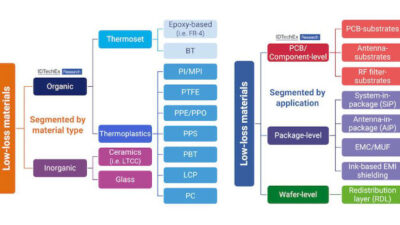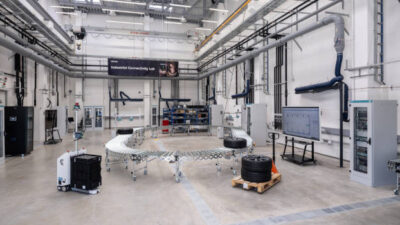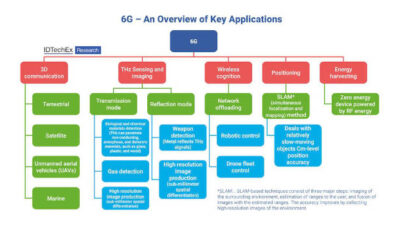Application update: Existing and emerging industrial standards can be used effectively for rugged industrial applications and other hostile environments. Volcano Eyjafjallajokull exploded, but the wireless monitoring network there survived. For extreme wireless performance, watch for IEEE 802.11ad, WiGig wireless, with 60 GHz, 7 Gbit/sec capabilities.
It’s possible to extend existing wireless networks and integrate new technologies and network topologies to improve performance in highly rugged environments. A new published standard, IEEE 802.11ad or "WiGig," seems likely to make a new tri-band Wi-Fi option available soon. Using 60 GHz, the new standard would provide a theoretical maximum throughput of up to 7 Gbit/s. At 7 Gbit/s you could record everything your factory or plant or volcano was doing while simultaneously watching it all live in 1080-pixel HDTV.
In December 2009, seismographs at Iceland’s Eyjafjallajokull volcano (Figure 1) started to report a steady increase in seismic activity. Remote GPS units observed that the local landscape was being displaced in a southward direction. Flow meters and thermometers in the adjacent river recorded a rise in water level and water temperature. By March, a small eruption had started and fissures, lava flows, and flash floods were making ground travel in the region increasingly hazardous. By mid-April the eruption had grown so powerful that the volcano’s ash cloud was shutting down air travel as well, and passengers and cargo were stranded all over Western Europe for nearly a week. Yet, through it all, the staff members at the Icelandic Meteorological Office were able to continue collecting and analyzing data from their remote devices. How did they do it?
New network topology
Industrial networks started out as hardwired serial systems. They got the job done, but they had ranges that could be measured in thousands of meters. Safely monitoring a live volcano requires rather more range than that. And hardwired connections would be problematic in a volcanic environment anyway, thanks to the seismic activity, the lava flows, and the flash floods.
So the Icelandic Meteorological Office went wireless. Its workers installed remote cellular modems that network-enabled their various sensors via Ethernet, USB, or serial connections and then transmitted the data via the cellular telephone network. Solar panels powered the various pieces of equipment and backup batteries (Figure 2), so there was no need to rely upon vulnerable power lines. Eyjafjallajökull eventually exploded, but the network survived.
Mixing old, new networks
Note that there was no need to purchase special sensors. Whether the remote devices were old or new, and whether they needed to communicate via Modbus or TCP/IP, the cellular router was happy to accommodate them. Thanks to media conversion, virtually any data stream from virtually any device can now be integrated into a modern network and transported via the newer media and protocols. It’s not only possible to extend the network edge to include a volcano; it’s possible to create network topologies that span the entire globe.
Until recently, cellular networks couldn’t serve as a wire replacement in every application. 3G systems could provide for data rates of several Mbit/s, which was very useful. But the specifications for the newer 4G LTE standards call for peak data rates of up to 100 Mbit/s for high mobility devices and up to 1 Gbit/s for low mobility devices. And perhaps even more intriguing, message latency, which can run in the hundreds of milliseconds for 3G, improves to tens of milliseconds over LTE. With throughput like that, the 4G LTE cellular networks will be able to serve as a true replacement for long-range cabling. The cellular providers are winding down 2G services to make room for an expected explosion in 4G LTE data networking.
Improvements in Wi-Fi
Cellular networking requires the purchase of a data plan. So for local wireless connections it’s often more cost effective to deploy Wi-Fi. But, until recently, Wi-Fi’s potential was limited by issues like multipath propagation. As radio waves tend to be absorbed or reflected by everything that stands in their way, from trees to parked cars, the transmitted signals arrive at the receiver at different times and out of sequence. The higher the radio frequency, the worse it gets.
Lower frequencies, on the other hand, provide less bandwidth and require larger antennas and more power to produce useful gain.
The IEEE 802.11n Wi-Fi standard addresses these issues. Its multiple-input multiple-output (MIMO) technology deploys multiple antennas at both the transmitting and receiving sides of the wireless connection and splits the data into numerous spatial streams. The streams are transmitted through separate antennas and collected by corresponding antennas in the receiving devices, where onboard software uses signal processing algorithms to correct and interpret the incoming data. When handled in this fashion, multipath propagation becomes an advantage instead of a problem.
MIMO 802.11n devices also employ precoding and postcoding techniques like spatial beamforming to help them communicate with one another. Spatial beamforming modifies the phase and relative amplitude of the signal to create a pattern of constructive and destructive interference in the wavefront, which simplifies interpretation on the receiving side. The 802.11n standard also adds frame aggregation to the MAC layer, and makes it possible to specify management information less frequently by grouping several data frames into a single, larger frame. As the ratio of payload data to total data volume is higher, throughput is improved. The 802.11n standard also adds 40 MHz channels to the physical layer (PHY). That’s twice the bandwidth that was available under the older 20 MHz standard.
With its multiple radios and multiple antennas, a MIMO device would theoretically need more power than a device with a single radio and antenna. So MIMO devices transmit their data in bursts and render themselves inactive during idle periods, greatly reducing the need for power.
The result of all this is that Wi-Fi’s range and reliability have seen dramatic improvements. When combined with cellular networking for long-range backhaul, an entire network topology can now be wireless.
Wireless network security
When a network includes shared or public connections like the cellular system, users don’t have the same end-to-end control that comes with a privately owned and managed system. One solution is virtual private network (VPN) tunneling. Users at a VPN tunnel’s endpoints must authenticate before the tunnels can be established, and the data is encrypted before it is sent. That gives users the same functionality and security that they’d get from a private network.
And this is only the beginning. A new published standard, IEEE 802.11ad or "WiGig," could make a new tri-band Wi-Fi option available quite soon. Using 60 GHz, the new standard would provide a theoretical maximum throughput of up to 7 Gbit/s. At 7 Gbit/s you could record everything a plant, factory, or volcano was doing while simultaneously watching the whole show live, in glorious 1080p HDTV.
– Mike Fahrion, the director of product management at B&B Electronics, specializes in data communications with 20 years of design and application experience. He oversees development of the company’s rugged M2M connectivity solutions for wireless and wired networks based on serial, Ethernet, wireless, and USB communication technologies. Fahrion has expertise in reliable connectivity solutions for devices deployed at the “edge” of networks in remote, harsh, or uncontrolled environments. Fahrion is a speaker and author who writes a self-described politically incorrect newsletter, “eConnections,” with more than 50,000 monthly subscribers. Fahrion holds a BSEE from Iowa State University. Edited by Mark T. Hoske, content manager, CFE Media, Control Engineering, [email protected].
ONLINE
See links at bottom for other Fahrion articles about industrial networks.
www.bb-elec.com



